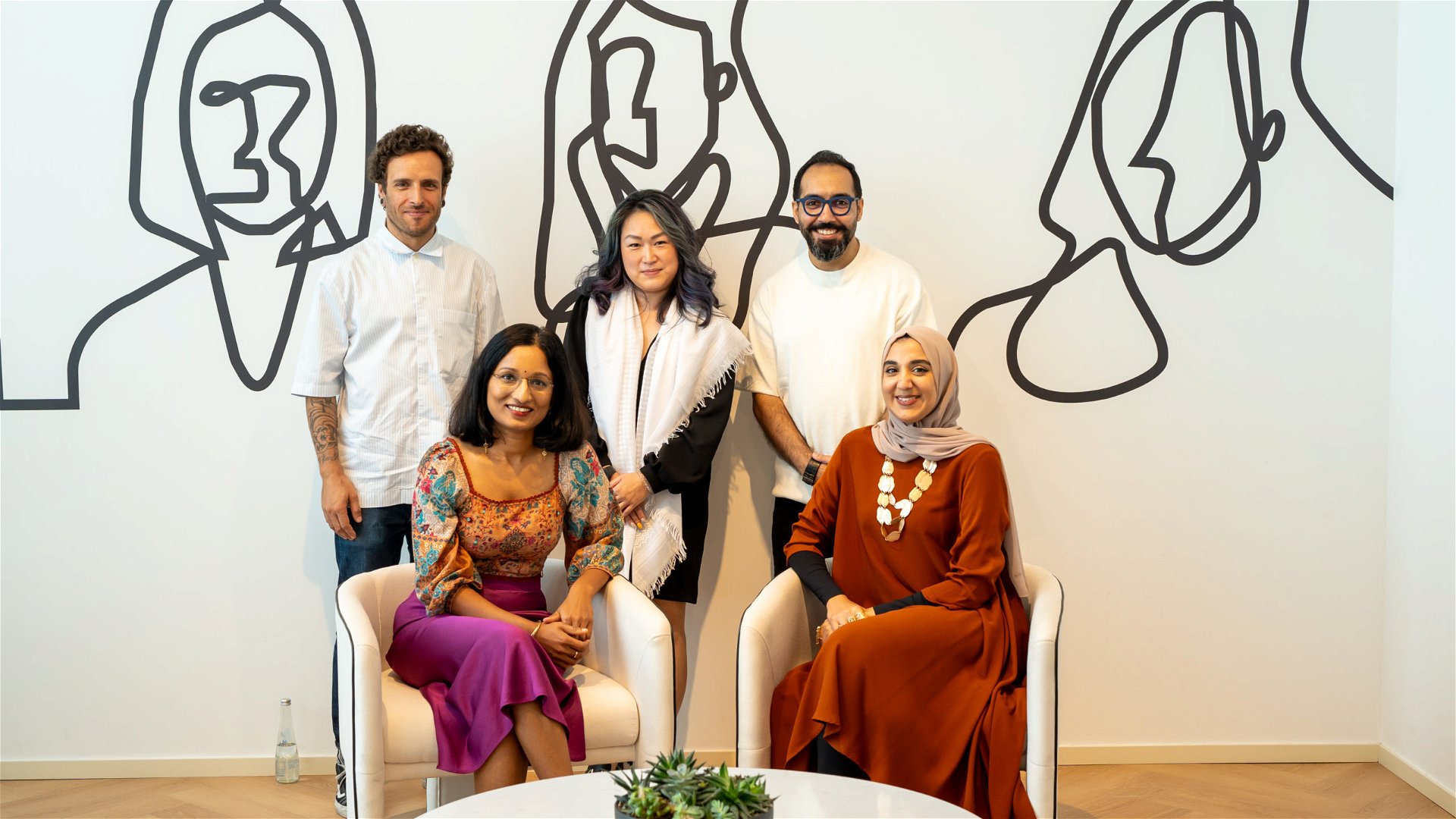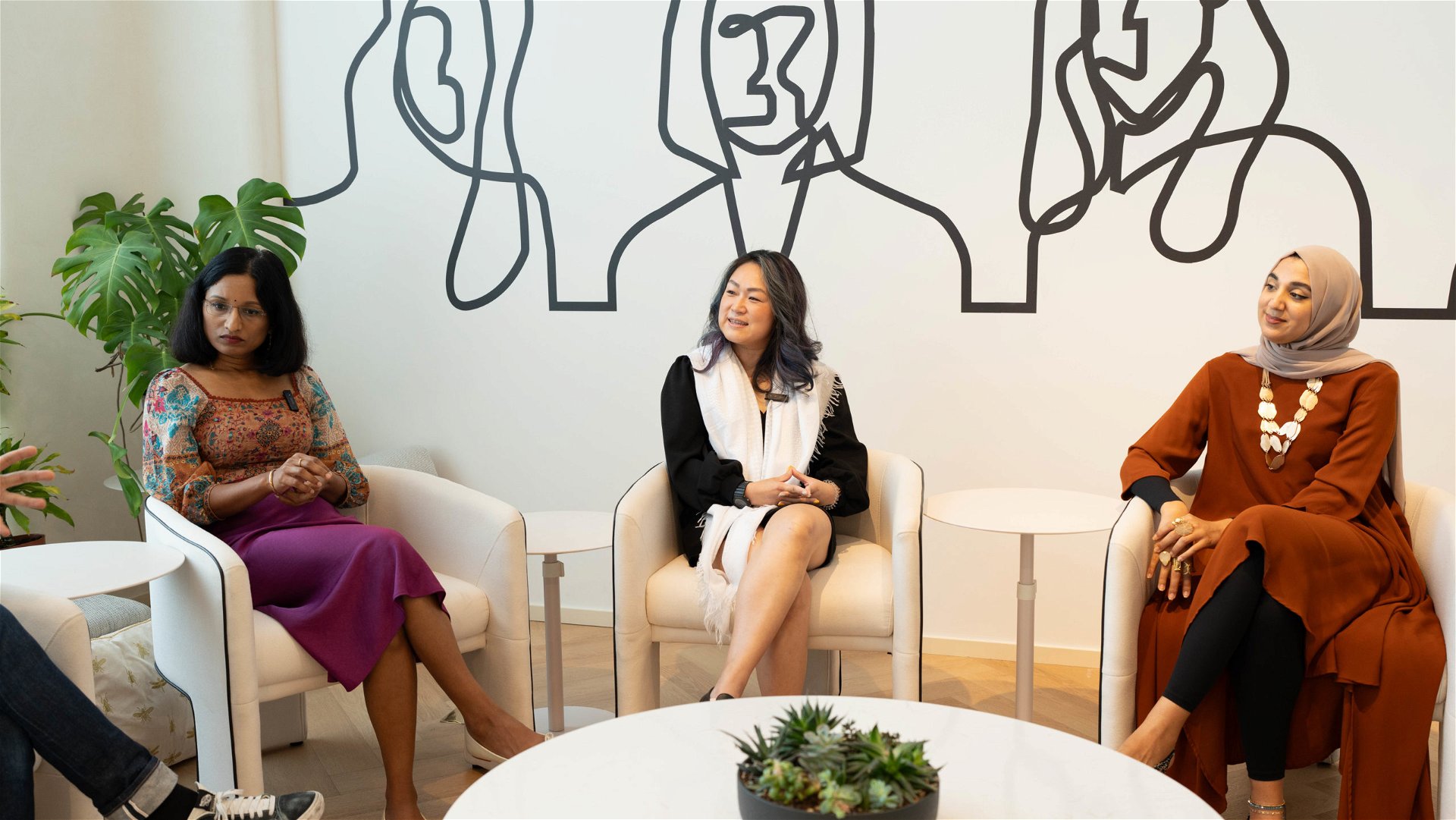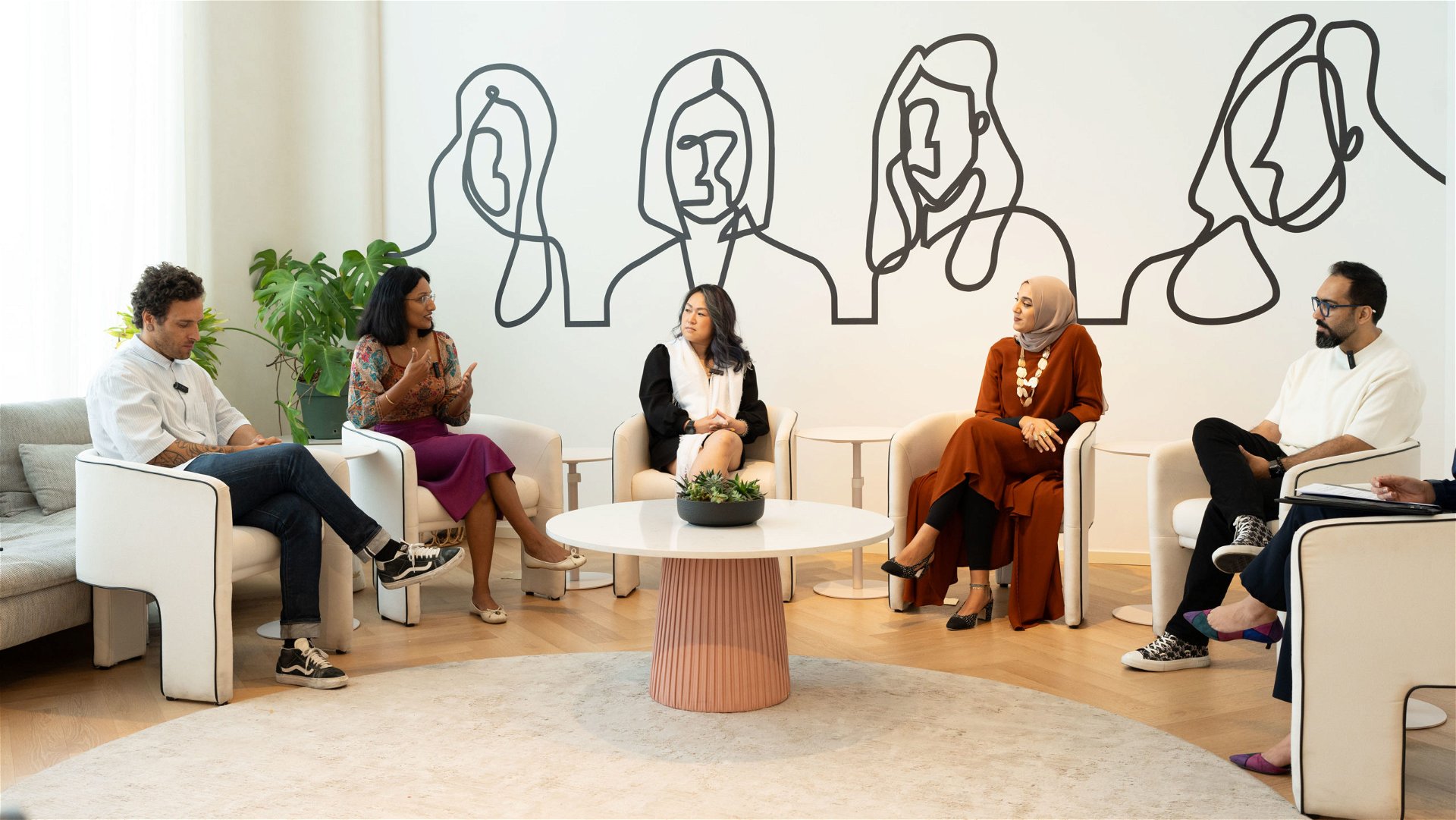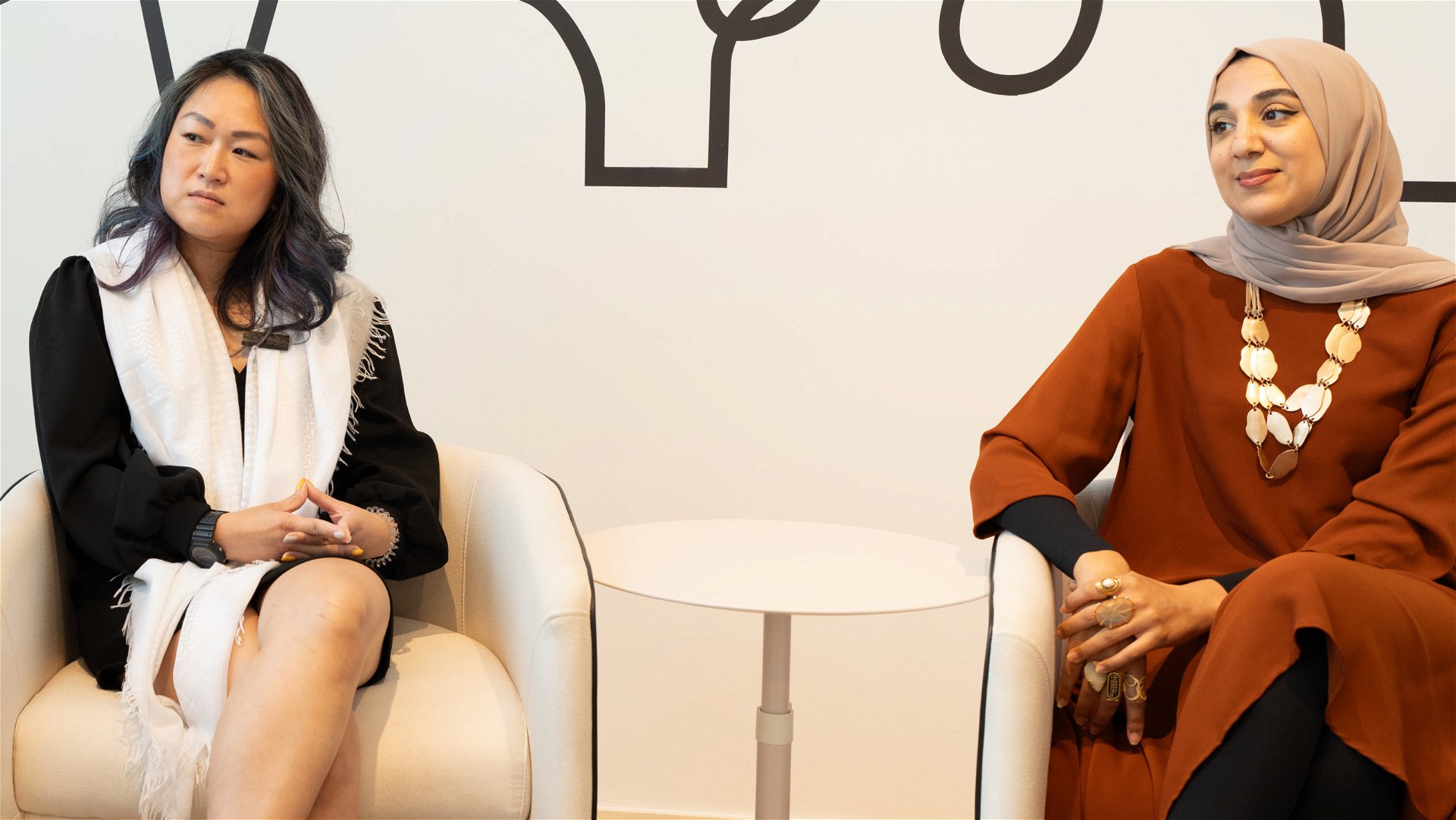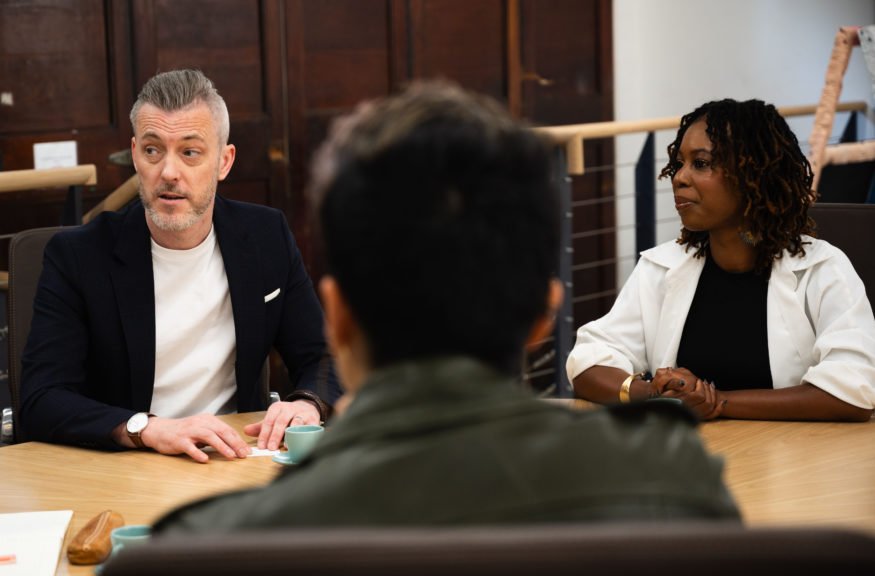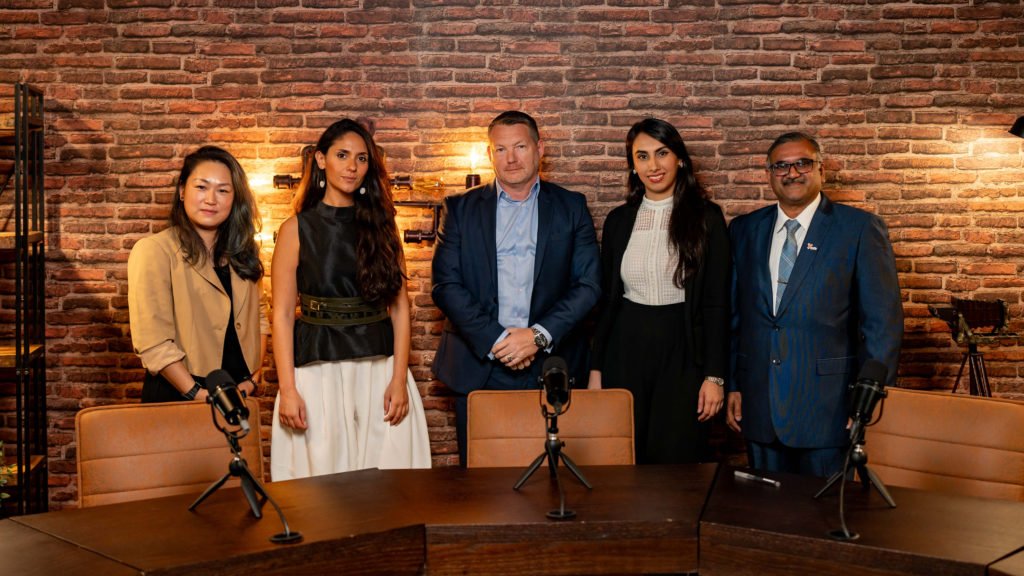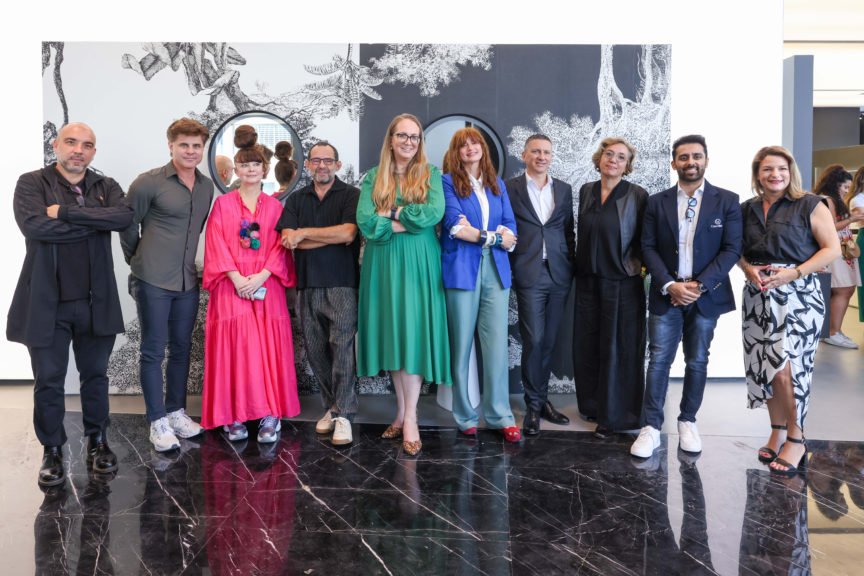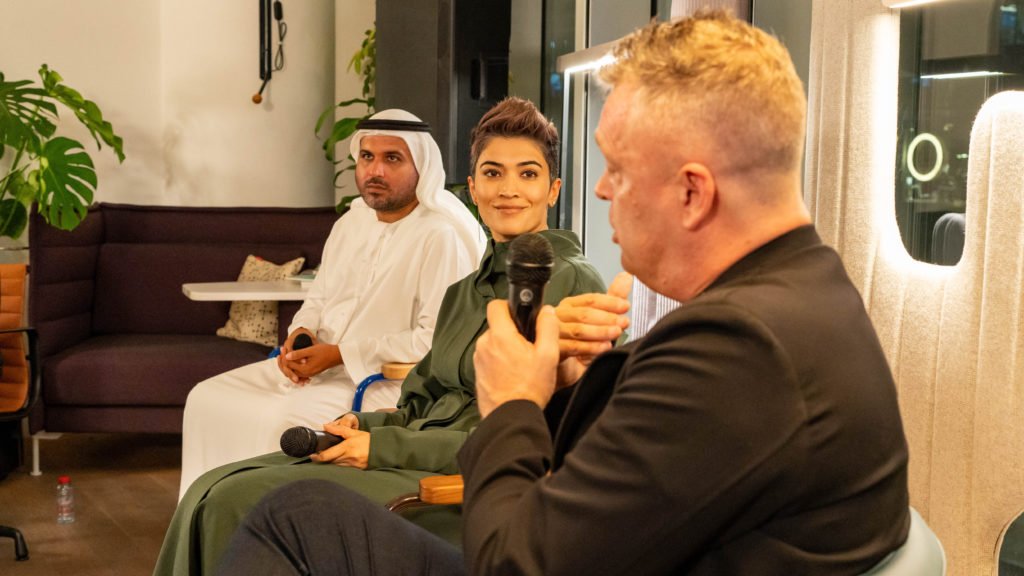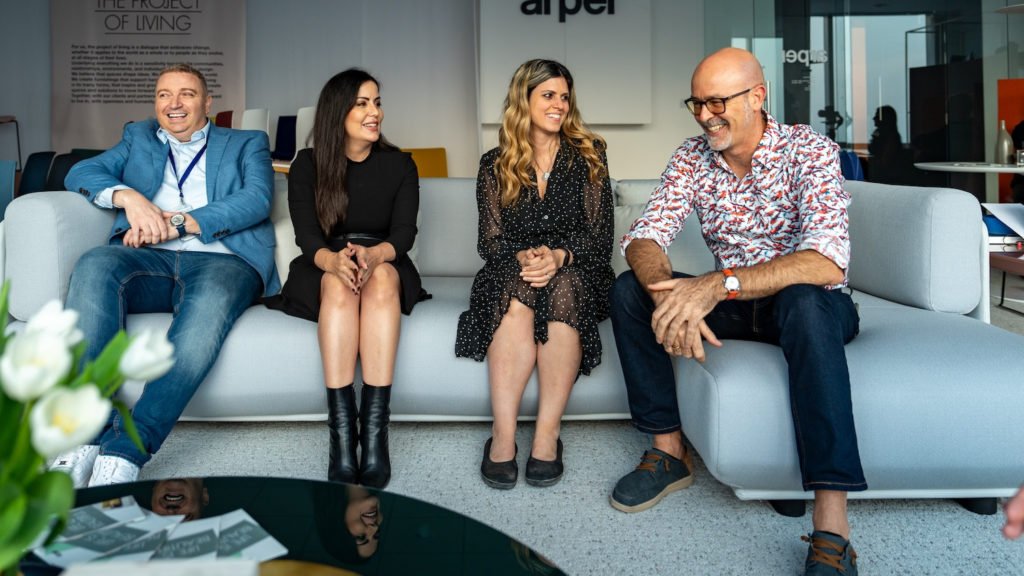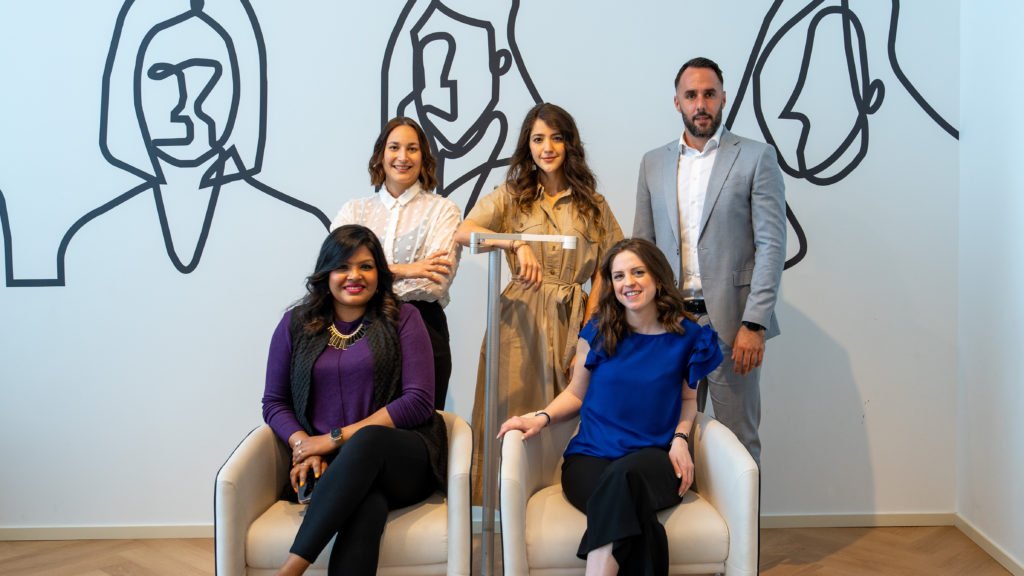On 22nd November 2023, Dyson invited designers from Summertown, INC Group, KCA International, Select Group, and DWP to The Bureau. The agenda was to outline sustainability and its ever-growing significance in hospitality design. We pondered upon everything from our love for nature and individual values to green building certifications and the idea of regeneration. Here are the glimpses…
Sustainability has become the ‘buzzword’ of the decade. Yet, it is much more than that.
Specifically addressing the Architecture, Engineering, and Construction (AEC) industry, we are witnessing a shift in the way we approach design and build activities. Sustainability is no longer being perceived as yet another trend, but rather, an integral component shaping the future of life on earth.
Top: Mennah Darwish, Design Manager, Select Group; Deepa Sasidharan, Architect & Creative Lead, INC Group
Bottom: Rakan Jandali, Design Principal & Creative Director, KCA International; Mira Kurniawan, Associate Design Director, DWP; Emanuel Marreiros, LEED Green Associate and Design Creative, Summertown
In their own rightful ways, green building practices, ideologies, and techniques are taking the centre stage. Professionals are becoming more sensitive towards the environment and all the more conscious of their impact on it. They are making a notable attempt to create spaces that enhance the quality of life of people, keeping them healthy and happy.
“We spend 90% of our time in indoor spaces. So, you know, it is essential to think about how well we can design these spaces because we are the ones being impacted,” avers Mennah Darwish, the Design Manager at Select Group.
Championing the Cause of Awareness
Passing the Baton to Consumers
While the idea of sustainability is at the forefront of every panel discussion, it is yet to penetrate among the masses. There is a very superficial understanding of sustainability at the community level which reflects the everyday choices of people. From normalising single-use plastic bags to not being mindful about waste segregation at source, the negligence of people is causing more harm. Therefore, it is essential for people to be aware of their actions so as to minimise their carbon footprint.
“There is a need for education between the developers and the design contractors, but mainly to the users, so that you can move towards a more sustainable living.” says Emanuel Marreiros, a LEED Green Associate and the Design Creative at Summertown.
Reflecting upon one of his recent hospitality projects, Rakan Jandali, Design Principal & Creative Director at KCA International asserts, “If we’re talking about the end users, it is crucial to think of how we can push them towards a sustainable approach. What we did in one of our projects, which was interesting, is a reward system.”
He adds, “We created this reward system where your guests can measure their carbon footprint during their stay at the hotel. A system was chalked out with the hotel operator to make people feel more accountable. And if you meet certain parameters you get a pin with your initials that goes into a 3D art piece in the hotel lobby acknowledging your contribution to the larger goal of sustainable living.”
“We created this reward system where your guests can measure their carbon footprint during their stay at the hotel. A system was chalked out with the hotel operator to make people feel more accountable. And if you meet certain parameters you get a pin with your initials that goes into a 3D art piece in the hotel lobby acknowledging your contribution to the larger goal of sustainable living.“
– Rakan Jandali, Design Principal & Creative Director, KCA International
Beyond Green Building Certifications
Sustainability is Innovation
Designing sustainable buildings is an intuitive process. However, the prevailing state of affairs in the AEC industry gives the notion of a rat race- one that is undertaken to bag green building certificates like the LEED and WELL. Concurring with this idea, Mira Kurniawan, the Associate Design Director at DWP affirms, “At the end of the day, all your sustainable building is just thinking out of the box.”
“I have a love for nature,” says Deepa Sasidharan, an architect and the Creative Lead at INC Group. She elaborates, “Nature and sustainability are words that represent the ultimate form of life. The world can exist even if humans don’t. So, we have to understand that we cannot exist without the environment. You cannot have greed in your head and say I must get a LEED certification; unless you are actually doing something sustainable with your work. It boils down to your value system.”
“Nature and sustainability are words that represent the ultimate form of life. The world can exist even if humans don’t. So, we have to understand that we cannot exist without the environment. You cannot have greed in your head and say I must get a LEED certification; unless you are actually doing something sustainable with your work. It boils down to your value system.“
– Deepa Sasidharan, Architect & Creative Lead, INC Group
The Significance of Materials and Circular Economy
Is going Local the Solution?
Materials play a pivotal role in realising a project. Rather, they are the elements that make our ideas tangible. So, when selecting materials for a project, it is essential to think about its origin, availability, manufacturing, and lifecycle.
Speaking about her line of work, Mira shares, “For me, in terms of refurbishment projects which are a major segment of our portfolio, we always do a site visit and see how we can best repurpose a piece of furniture or material. If let’s say the side tables look nice, you just need to refinish it, then it looks like new.”
“For me, in terms of refurbishment projects which are a major segment of our portfolio, we always do a site visit and see how we can best repurpose a piece of furniture or material. If let’s say the side tables look nice, you just need to refinish it, then it looks like new.“
– Mira Kurniawan, Associate Design Director, DWP
She adds, “If you have to change something then why do you need to rip everything off? You can keep it as an added value into the space. So understanding all of those is also an important aspect of sustainability through approach to design.”
Mennah presents a cause close to her heart in this context. She strongly believes procuring more from local manufacturers is the way forward. That way alongside saving on emissions due to imports, the design industry can also foster the local community. “The quality might not match with international standards today, but it is only when we begin investing and bringing business to these companies that they can work on their offerings”, she opines.
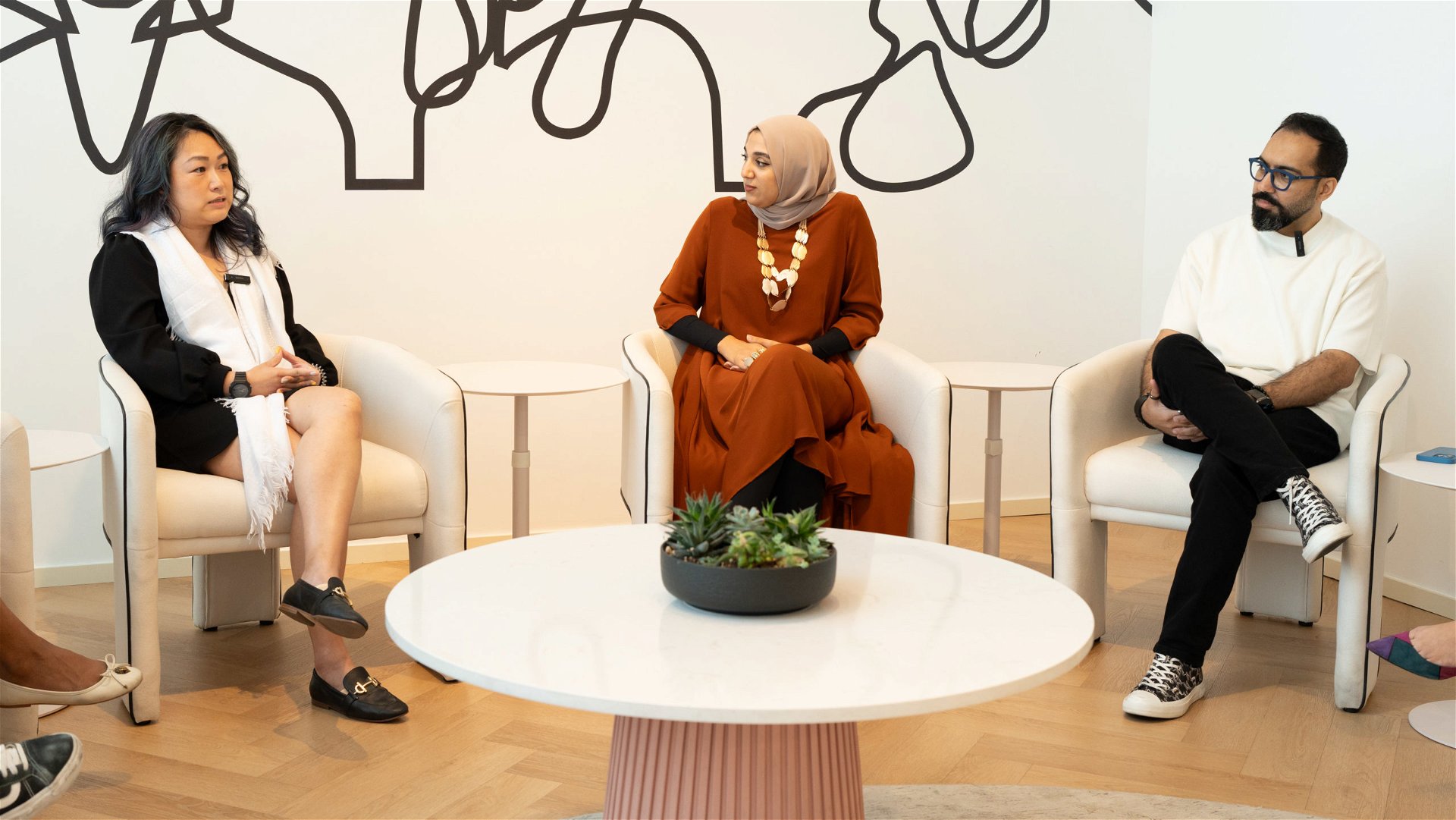
“The quality [provided by local vendors] might not match with international standards today, but it is only when we begin investing and bringing business to these companies that they can work on their offerings.“
– Mennah Darwish, Design Manager, Select Group
Collaborating For a Shared Vision
In it for the Environment
Sustainability is a shared vision for the future of life on earth and therefore it is imperative for architects to collaborate with people who resonate with this ideology. It is only then that the outcome can be sustainable in essence.
Mennah explains, “We have had instances at our office when a supplier claims that they are manufacturing sustainably but when you ask them the question of how, we are met with silence as a response. We cannot collaborate in such cases, because the thought process simply does not sync.”
Nodding in agreement, Deepa says, “Absolutely. We select operational partners who align with our goals of sustainability.”
“Today, every single project is applying for a green certificate. So, a lot of materials suppliers are now manufacturing sustainably and getting their products green certified. They are familiar with the process and they already know that we’re going to go green.“
– Emanuel Marreiros, LEED Green Associate and Design Creative, Summertown
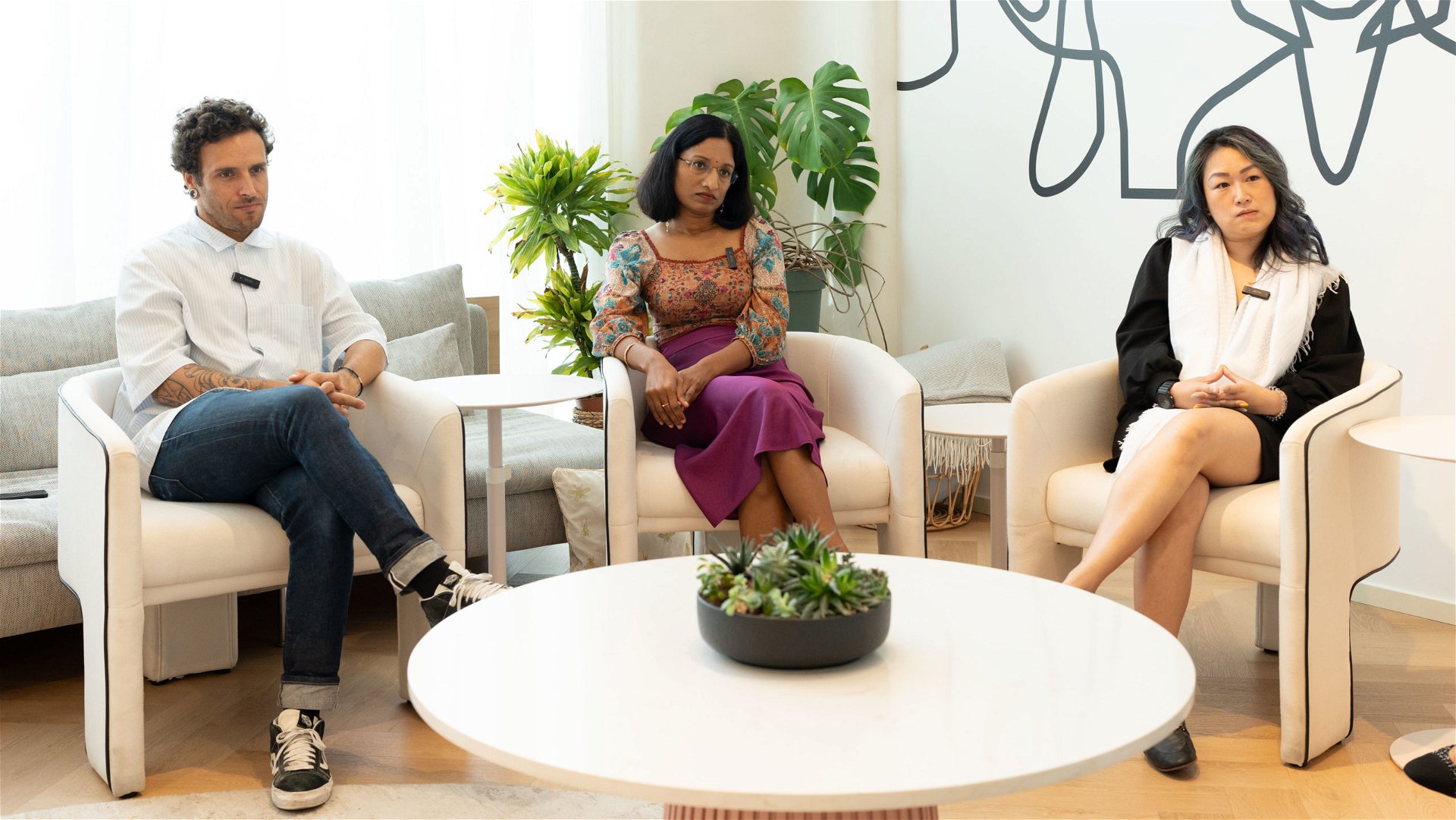
Adding to this, Emanuel says, “Today, every single project is applying for a green certificate. So, a lot of materials suppliers are now manufacturing sustainably and getting their products green certified. They are familiar with the process and they already know that we’re going to go green.”
In this context, the Dyson Airblade 9kJ Hand Dryer has emerged as a beloved product for those seeking energy-efficiency in their designs. The brand has been spearheading the integration of smart technology into building systems for achieving sustainability. With this hand dryer, they promise to reduce the use of single-use paper towels by 99%. The dryer provides hygiene performance with HEPA filters along with a seamless drying time of 10-12 seconds.
In one-on-one interviews later, all panellists mentioned a common aspect that attracts them to Dyson, its prowess in technology. It not only impresses users with its efficiency but effortlessly underscores sustainability. “I cannot wait for Dyson to brand their production to building materials”, Mennah emphasised.
Collaborating For a Shared Vision
In it for the Environment
The spectrum of sustainable development is far broader than we assume. And this was rightly pointed out by Jandali when he mentioned, “All we’re trying to do is doing less harm to the environment. We’re not really doing anything to improve the environment. That’s why we need to move beyond sustainability. And this is where the concept of regenerative design comes on board.” Banking on this idea he says, “Building a structure becomes a collaborative project with nature. It focuses on how humans and nature coexist to inhabit thriving living communities.”
Throughout the session, the invitees reckoned with the notion of viewing sustainability from a larger perspective; a perspective that is more inclusive, deep-rooted, and meaningful.
In-Studio with Dyson Airwrap
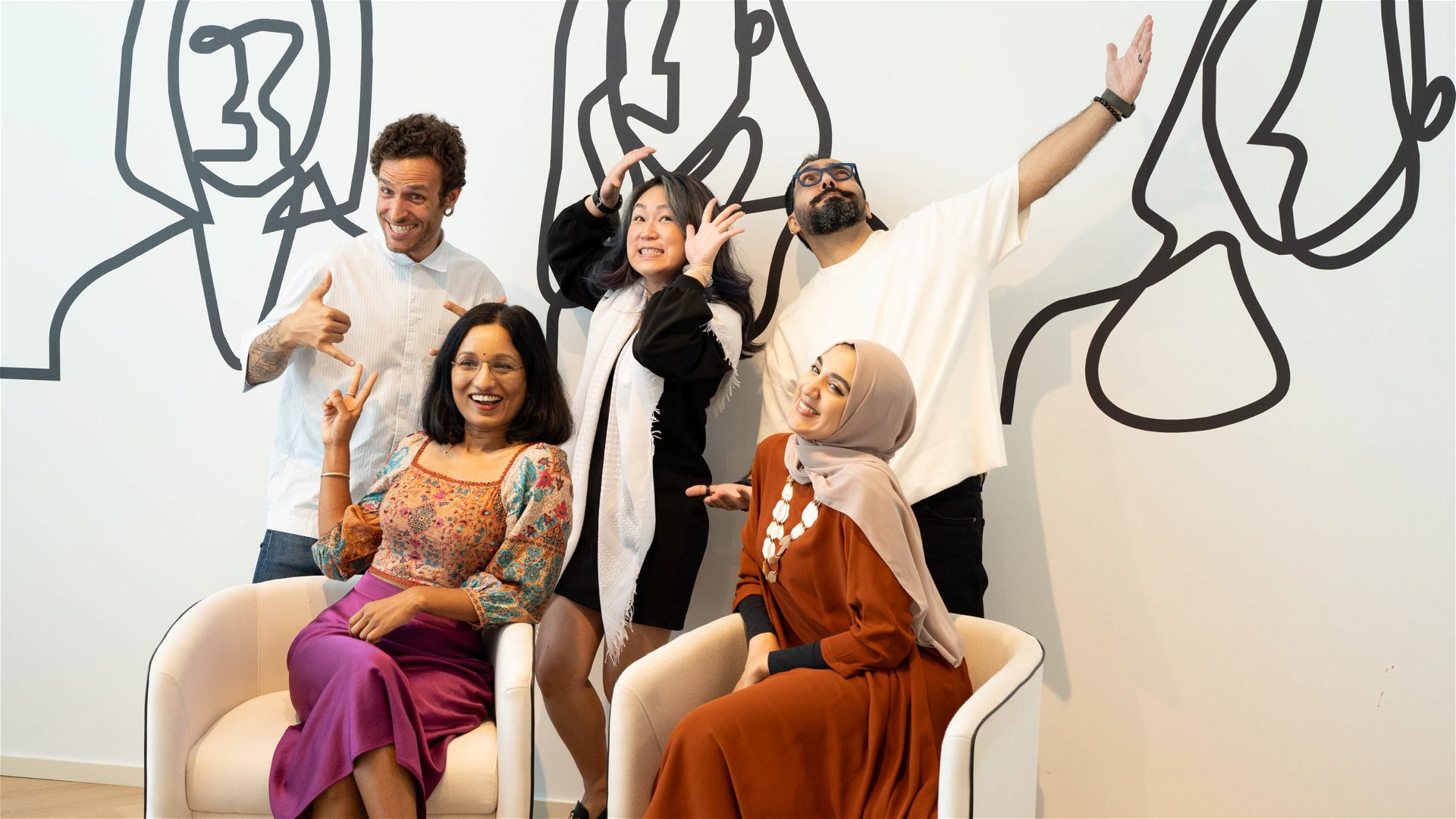
Article info
Article:
Date added:
10 January, 2024

